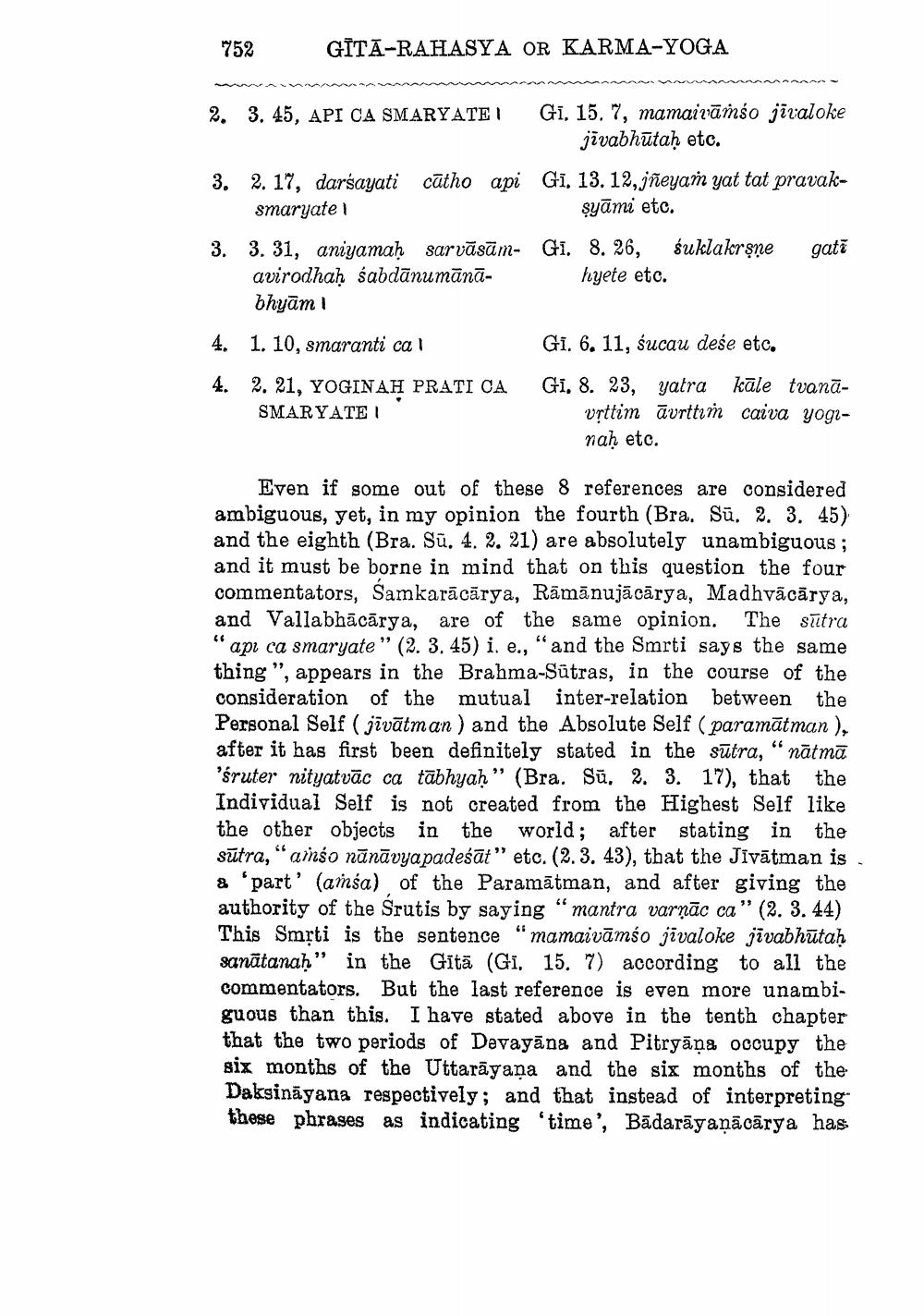________________
752
GITA-RAHASYA OR KARMA-YOGA
2. 3. 45, API CA SMARYATE
3. 2. 17, darsayati catho api GI. 13. 12, jñeyam yat tat pravaksmaryate 1
ṣyāmi etc.
3. 3. 31, aniyamaḥ sarvāsāmavirodhaḥ sabdānumānā. bhyām
4. 1. 10, amaranti ca 1
Gi. 15. 7, mamairamhso jivaloke jivabhutaḥ etc.
4. 2. 21, YOGINAH PRATI CA SMARYATE
G. 8. 26, hyete etc.
kuklakrone
gati
Gi. 6. 11, sucau dese etc.
GI. 8. 23, yatra kale tvanāvṛttim avrttim caiva yoginah etc.
"6
66
Even if some out of these 8 references are considered ambiguous, yet, in my opinion the fourth (Bra. Sü. 2. 3. 45) and the eighth (Bra. Sü. 4. 2. 21) are absolutely unambiguous; and it must be borne in mind that on this question the four commentators, Samkarācārya, Ramanujācārya, Madhvācārya, and Vallabhācārya, are of the same opinion. The sutra api ca smaryate" (2. 3. 45) i. e., "and the Smrti says the same thing", appears in the Brahma-Sutras, in the course of the consideration of the mutual inter-relation between the Personal Self (jivätman) and the Absolute Self (paramātman), after it has first been definitely stated in the sutra, nātmā 'śruter nityatvac ca tabhyaḥ" (Bra. Su, 2. 3. 17), that the Individual Self is not created from the Highest Self like the other objects in the world; world; after stating in the sūtra, "aiso nūnāvyapadeśāt" etc. (2. 3. 43), that the Jivātman is a 'part' (amsa) of the Paramatman, and after giving the authority of the Srutis by saying "mantra varṇāc ca" (2. 3. 44) This Smrti is the sentence "mamaivāméo jivaloke jivabhutaḥ sanatanaḥ" in the Gita (GI. 15. 7) according to all the commentators. But the last reference is even more unambiguous than this. I have stated above in the tenth chapter that the two periods of Devayana and Pitryäna occupy the six months of the Uttarayana and the six months of the Daksinayana respectively; and that instead of interpreting these phrases as indicating 'time', Badarāyaṇācārya has




